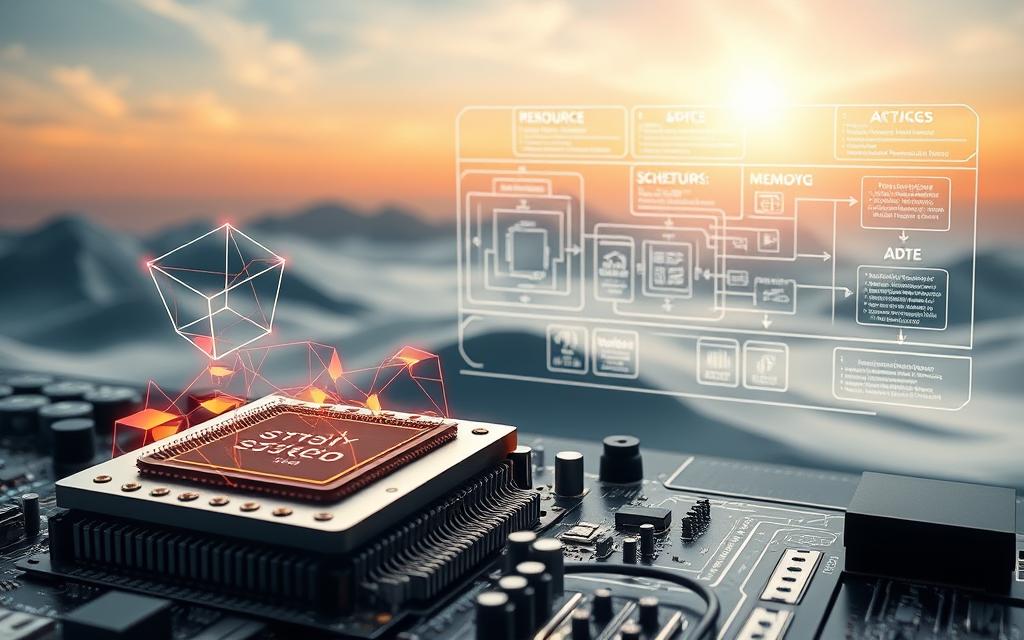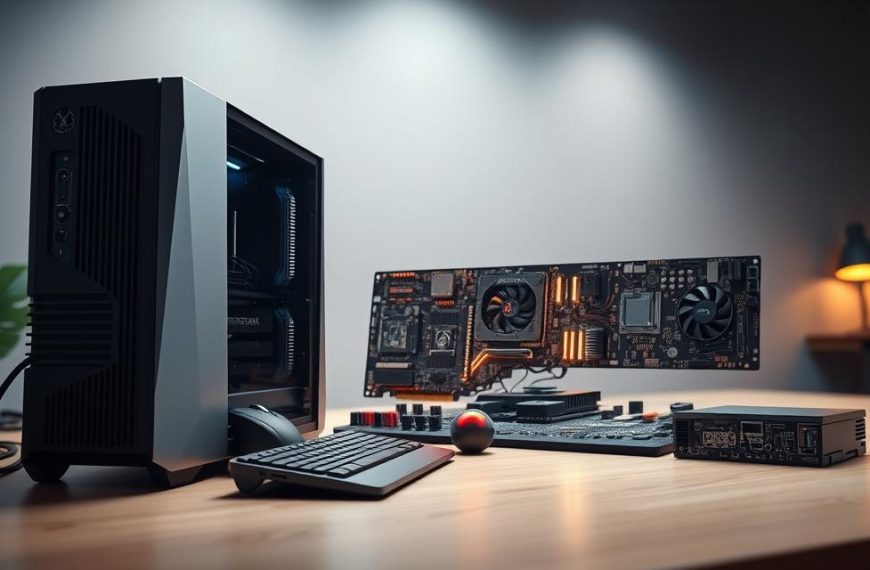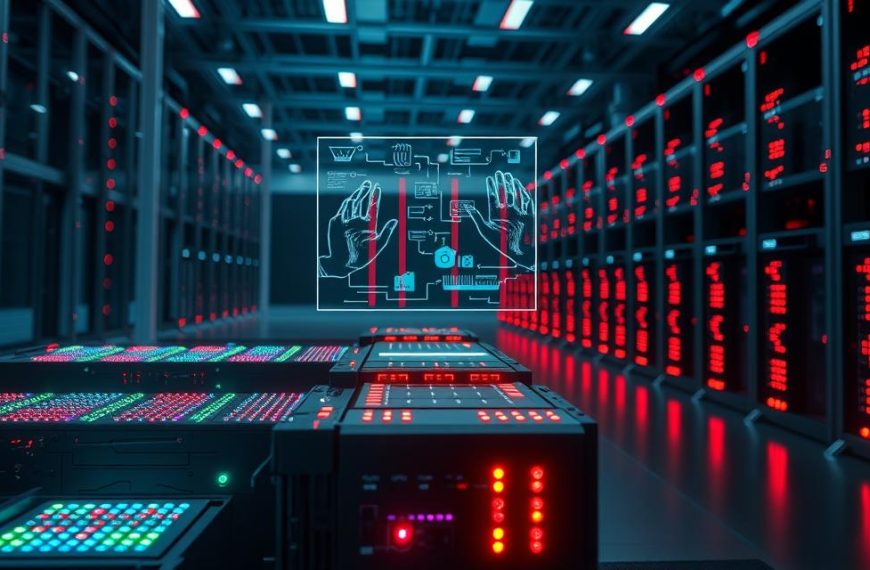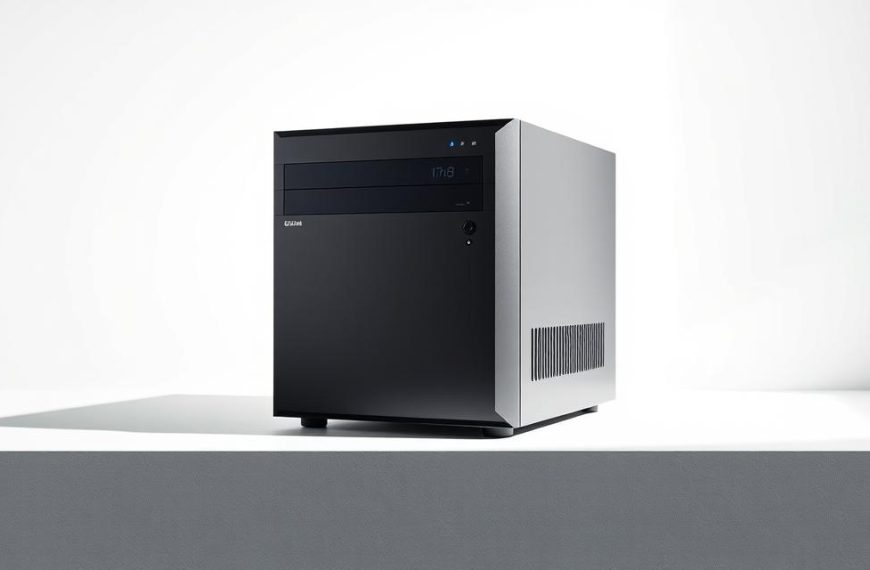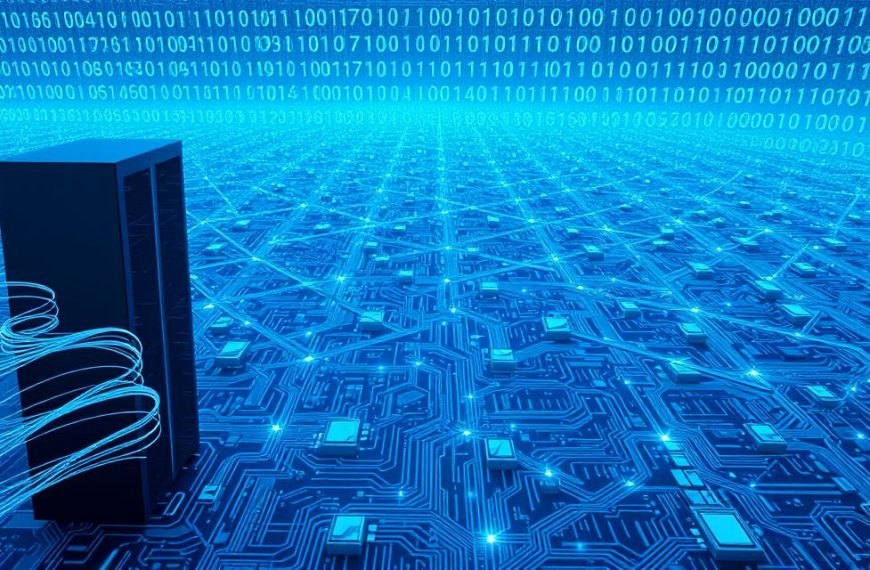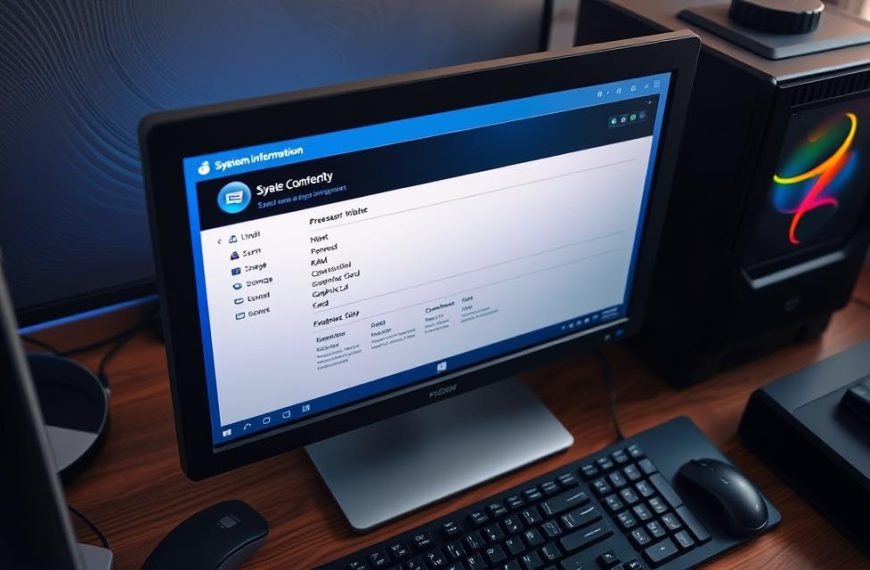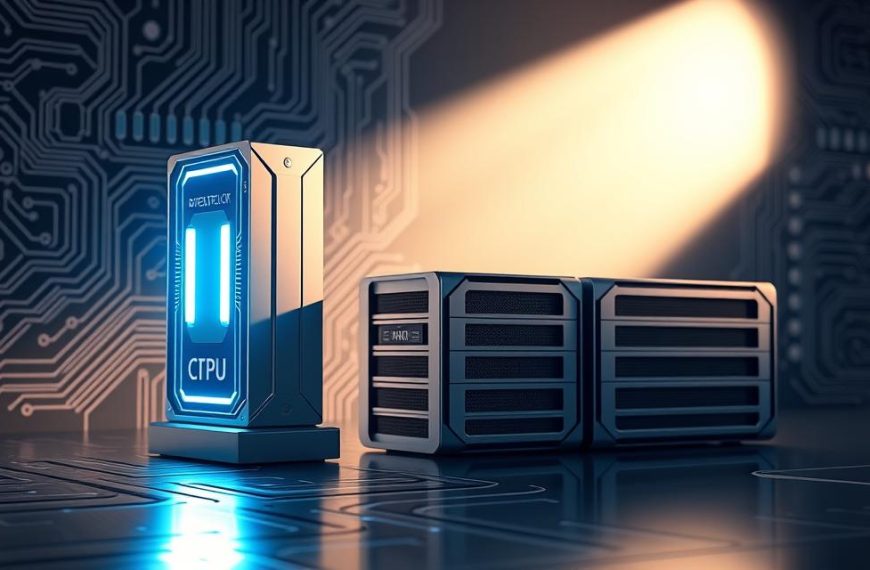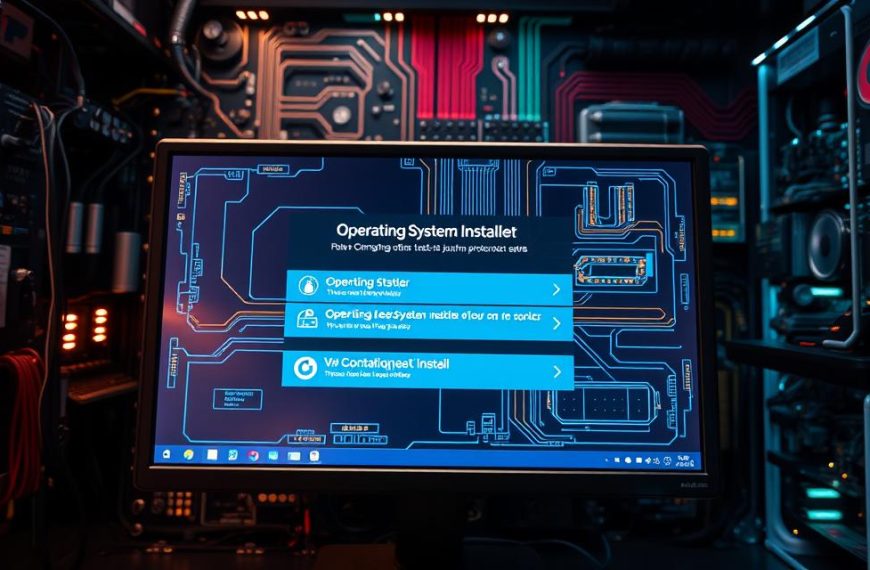Every computer has a key software part at its core. This programme controls all hardware and makes using computers easy for us.
Its main job is to make a good place for programmes to run. It does this by smartly using the computer’s power, memory, and storage.
Users don’t have to deal with the hard stuff themselves. This layer makes computers easy to use and fast.
It keeps everything running smoothly, even when many programmes are open at once. The system sorts out tasks, handles memory, and works with devices without us needing to do anything.
Knowing how an operating system works is key to understanding computers today. It shows how clever software turns basic hardware into something we can all use easily.
What is the Function of an Operating System in a Computer?
An operating system acts as a bridge between computer hardware and software. It manages computer resource management well. It also offers key services that make computers easy to use and productive.
Core Objectives and Essential Components
Modern operating systems have three main goals. First, they divide system resources fairly among different apps. This ensures everyone gets a fair share of processing power, memory, and storage.
Second, they hide the complexity of hardware. This lets programmers work with simpler interfaces. It means software can run smoothly on various hardware setups.
Third, they provide services that many apps can use. These include managing files, ensuring security, and handling networks. These services help in building and running software.
The key parts that make these functions possible are:
- Kernel: The core that handles basic tasks
- Process scheduler: Controls how CPU time is shared
- Memory manager: Manages RAM and virtual memory
- File system: Organises data storage and access
- Device drivers: Helps talk to hardware devices
Evolution from Batch Processing to Modern Systems
Operating systems started with custom software for each task. In the 1950s, batch processing systems came along. These systems ran jobs one after another, with no user input.
The 1960s saw big changes with IBM’s OS/360. It allowed many programs to run at once. This made computers much more efficient.
The 1970s brought time-sharing systems like UNIX. These systems let many users use the computer at the same time. They introduced ideas like file systems and managing processes.
Today’s operating systems support graphics, real-time tasks, and distributed computing. They keep getting better to meet new needs while staying compatible with old software.
“The most important program that runs on a computer is the operating system. It manages both hardware and software resources.”
Operating systems have changed a lot over time. They’ve become more efficient, secure, and user-friendly. This shows how computers have grown in importance and complexity.
Central Resource Management Functions
Every operating system has key functions that make it work well. These ensure all tasks run smoothly. They manage resources so everything works together well.
CPU Allocation and Scheduling Strategies
The CPU scheduler decides which task gets the CPU and for how long. This stops the CPU from being idle and makes sure tasks are fair.
Today’s systems use different scheduling methods. Some focus on quick responses for interactive tasks. Others aim to do more work for tasks that don’t need quick answers.
Preemptive vs Non-Preemptive Scheduling
In preemptive scheduling, the OS can stop a task to give the CPU to another. This makes systems more responsive for urgent tasks.
Non-preemptive scheduling lets tasks run until they finish or give up control. It’s simpler but can make high-priority tasks wait longer.
| Scheduling Algorithm | Type | Best For | Key Characteristic |
|---|---|---|---|
| Round Robin | Preemptive | Time-sharing systems | Fixed time quantum for each process |
| First-Come-First-Served | Non-preemptive | Simple batch systems | Processes executed in arrival order |
| Priority Scheduling | Both | Real-time systems | Processes prioritised by importance |
| Shortest Job Next | Non-preemptive | Batch processing | Minimises average waiting time |
Memory Management and Optimisation
Memory management is vital in process management OS. It allocates memory to tasks and keeps them from interfering with each other.
The OS tracks memory use and handles requests and releases. This ensures memory is used efficiently.
Virtual Memory Implementation
Virtual memory makes systems seem to have more memory than they do. It uses disk space to extend physical memory. This creates the illusion of more memory, even on systems with little RAM.
The OS divides memory into fixed-size pages. These pages can be swapped between disk and physical memory as needed. This process is done without users noticing.
File System Organisation and Storage Handling
File management systems organise storage and access for data files. They make physical storage details easy for applications to use.
Modern file systems support many file types and operations. They also keep data safe through error detection and recovery.
Disk Scheduling Algorithms
Disk scheduling algorithms improve the order of read/write requests. This reduces head movement and access time. Different algorithms work best for different types of workloads.
Common methods include:
- First-Come-First-Served: Simple but inefficient for heavy loads
- Shortest Seek Time First: Minimises head movement but may cause starvation
- SCAN: Moves head back and forth across the disk
- C-SCAN: Circular version that provides uniform wait times
Input/Output Device Management
The OS manages hardware communication through device drivers. These drivers translate generic commands into specific operations. This lets applications work with different hardware without changing them.
Techniques like buffering, caching, and spooling help data flow smoothly. They deal with the speed difference between CPUs and devices.
Good process management OS techniques avoid bottlenecks in input/output operations. The system manages device queues and handles interrupt requests well.
Process Coordination and Multitasking Capabilities
Modern operating systems are great at handling many processes at once. They make it seem like everything is happening at the same time, even on single-core processors. This skill keeps the system running smoothly and uses resources well across all apps.
Inter-Process Communication and Synchronisation
Processes often need to share data and work together for complex tasks. Operating systems help with this through two main ways:
- Shared memory lets processes access the same memory areas
- Message passing helps processes send data through managed channels
To avoid problems, the operating system uses several methods to keep things in order:
- Locks give exclusive access to important parts
- Semaphores manage access with counters
- Monitors offer more advanced synchronisation tools
These tools make sure only one process can change shared resources at a time. This stops data from getting mixed up and keeps things consistent.
Deadlock Prevention and Resolution Techniques
Deadlocks are big problems in process management. They happen when processes get stuck waiting for each other’s resources. Modern operating systems have clever ways to deal with these issues.
To prevent deadlocks, they use several strategies:
- Resource allocation graphs show possible circular waits
- Banker’s algorithm ensures safe allocation sequences
- Timeouts automatically release resources after a while
If prevention doesn’t work, detection algorithms find deadlocked processes. Then, recovery methods fix the problem by:
- Ending processes to free resources
- Preempting resources with careful rollbacks
- Restarting affected processes automatically
These detailed operating system functions keep multitasking environments stable and efficient, even when they’re busy. The advanced memory management OS capabilities work together to coordinate processes and prevent system failures.
User Interaction and System Security Features
Today’s operating systems are great at making things easy for users while keeping things safe. They let us work well and keep our systems safe from harm. This mix of ease and safety is key to how we use computers today.
Command-Line and Graphical User Interfaces
How we talk to computers has changed a lot. We used to need to know a lot of technical stuff. Now, we can use computers easily with just a few clicks.
Command-line interfaces (CLI) are for those who like to type commands. They’re good for people who need to control their computers closely. It’s perfect for tasks that are hard to do with just a mouse.
Graphical user interfaces (GUI) changed everything. They made computers easy to use with pictures and icons. Now, we can find what we need without having to remember lots of commands.
GUIs are great for everyday use, but CLIs are better for certain tasks. Many systems let you switch between these two ways of using your computer. This makes it easier to do different things.
Access Control and Security Protocols
Computers have strong security to keep them safe. First, they check who you are with things like passwords. This is the start of keeping your computer safe.
Once you’re in, you can only do certain things. This is because of rules that control what you can see and do. It’s all about keeping important stuff safe from prying eyes.
Today’s computers also have:
- Encryption to keep data safe
- Firewalls to watch network traffic
- Systems to spot and stop bad activities
- Updates to fix security holes
These features work together to keep your computer safe. Even if one fails, others can stop bad things from happening. This is very important for keeping your files safe.
| Security Feature | Protection Scope | Implementation Level | User Impact |
|---|---|---|---|
| User Authentication | System access control | Kernel level | Login requirements |
| File Permissions | Data access restriction | File system level | Access limitations |
| Network Firewall | Communication security | Network stack | Connection rules |
| Encryption | Data confidentiality | Storage/transmission | Performance considerations |
| Update Management | Vulnerability protection | System services | Automatic maintenance |
It’s a big job to make computers safe and easy to use. Too much security can slow you down. But not enough can leave you open to danger. Modern systems try to find a good balance.
Good security also means keeping your files in order. This makes it easier to protect them. By organizing your files well, you can make your computer safer without making it hard to use.
Conclusion
Operating systems act as a bridge between computer hardware and software. They manage how the CPU works, how much memory is used, and how files are stored. They also handle device management to make computers run smoothly.
They keep an eye on how well the system is doing. They check how fast things respond and how much resources are being used. They also find and fix errors to keep the system stable and reliable.
Operating systems have come a long way from the early days. Now, they support complex tasks, strong security, and networking. They are key in both business and personal computing, adapting to new technology and user needs.

